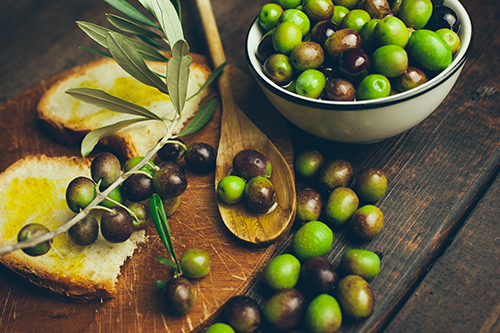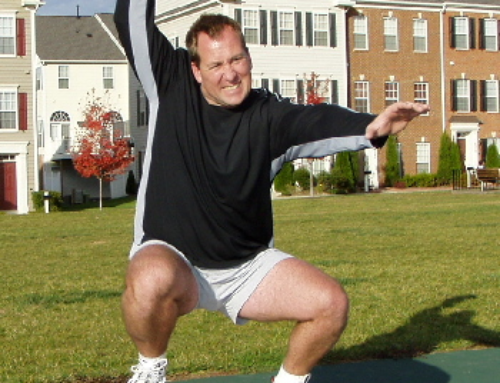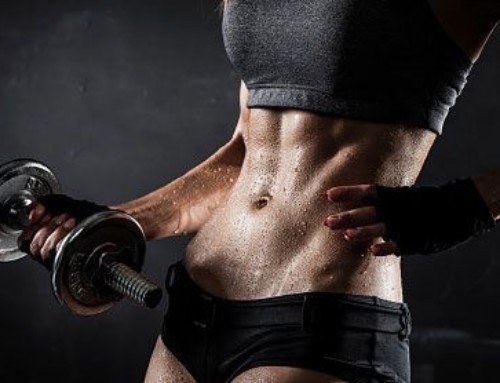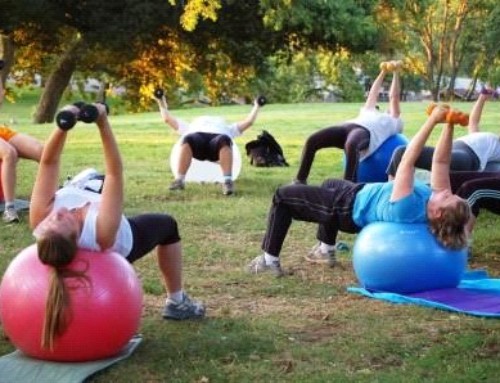Let’s face it. The hardest thing about losing fat is the nutrition plan that comes along with it. It’s inevitable that you will have to make some sacrifices in what you love to indulge in if your main goal is to lose inches and pounds of body fat. This is always the most frustrating piece of the puzzle for my fat loss clients, and it always continues to be a battle throughout their program.
Losing weight can be a struggle. Here are a few pointers, that if done consistently, will help get you on the right track.
- Cut down on liquid calories
This is one of the easiest things to cut back on if your goal is to drop some pounds. Some of the obvious items in this category are sodas, sweet tea, and alcohol.
These are often times the hardest things to cut out of your diet because it’s easy to find yourself craving them if you don’t get them. Start by cutting your overall intake in half, and start to progress towards cutting these out completely over time.
Some of the not so obvious things include coffee with added creamer and sugar, fruit juices, and sports drinks.
If you’re like me, changing up your coffee routine can be a deal breaker. Start by finding a creamer that isn’t loaded up with added sugars. Coconut creamer, almond milk, or coconut milk can be good options for these. Make sure you read the food labels! Begin to cut back on the amount of sweeteners you put in your coffee as well. Fruit juices and sports drinks such as Gatorade are loaded with sugar and unnecessary calories. Fruit juices can contain as much, if not more sugar than sodas. The same goes for sports drinks. A great alternative to store bought fruit juices is fruit infused water. I usually lean towards a blend of citrus fruits and berries put directly in my Brita filter at home. If you don’t like plain water, this is a game changer. When it comes to sports drinks, unless you are working out for more than 90 minutes and sweating profusely, there really isn’t a need. Plain water works just fine for the weekend warrior or for those who exercise sessions last less than 90 minutes. Save yourself the calories and the money.
- Increase fiber intake
Increasing your fiber intake will be your best friend when it comes to a successful fat loss program. Vegetables are rich in vitamins and minerals and they are loaded with fiber. They help you feel fuller longer so you’re not binging on too many snacks between meals and they are low in over all calories. Try to eat the rainbow when it comes to veggies and experiment with preparation techniques to find one that you like. My favorite way to prepare veggies is by roasting them. My go-to options for roasted veggies are Brussels sprouts, zucchini, broccoli, and kale.
Fiber also acts as a prebiotic in your gut. You have trillions of gut microbiome along your digestive tract that help do everything from keeping your immune function high, to sending signals to the brain. If your microbiome are happy and well fed, you will feel more energized, alert, and able to resist sickness more easily.
- Increase healthy fat intake
In the typical Western diet, we don’t usually have a problem getting enough fat in our diets. The problem is that we consume too much of the wrong fats. Getting more fat from healthy sources such as nuts, coconut oil, olive oil, nut butter, avocados, and grass-fed organic meats and eggs can actually help you lose weight. Fats help you feel more satisfied from a meal, and along with fiber helps keep you full between meals. They also don’t generate a huge insulin response like processed carbohydrates and sugars so your energy levels feel more steady and you don’t find yourself “crashing” between meals.
Here is 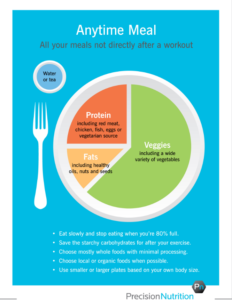 a great guideline to follow when it comes to how a typical plate should look. Notice it has a lot of veggies, some healthy fats, and protein incorporated at each meal. If you are consistently making great choices the results will come!
a great guideline to follow when it comes to how a typical plate should look. Notice it has a lot of veggies, some healthy fats, and protein incorporated at each meal. If you are consistently making great choices the results will come!
By Josh Soper, Personal Trainer and Co-owner BS, CSCS, Certified Strength and Conditioning Specialist at Lake Norman Fitness Specialists.


